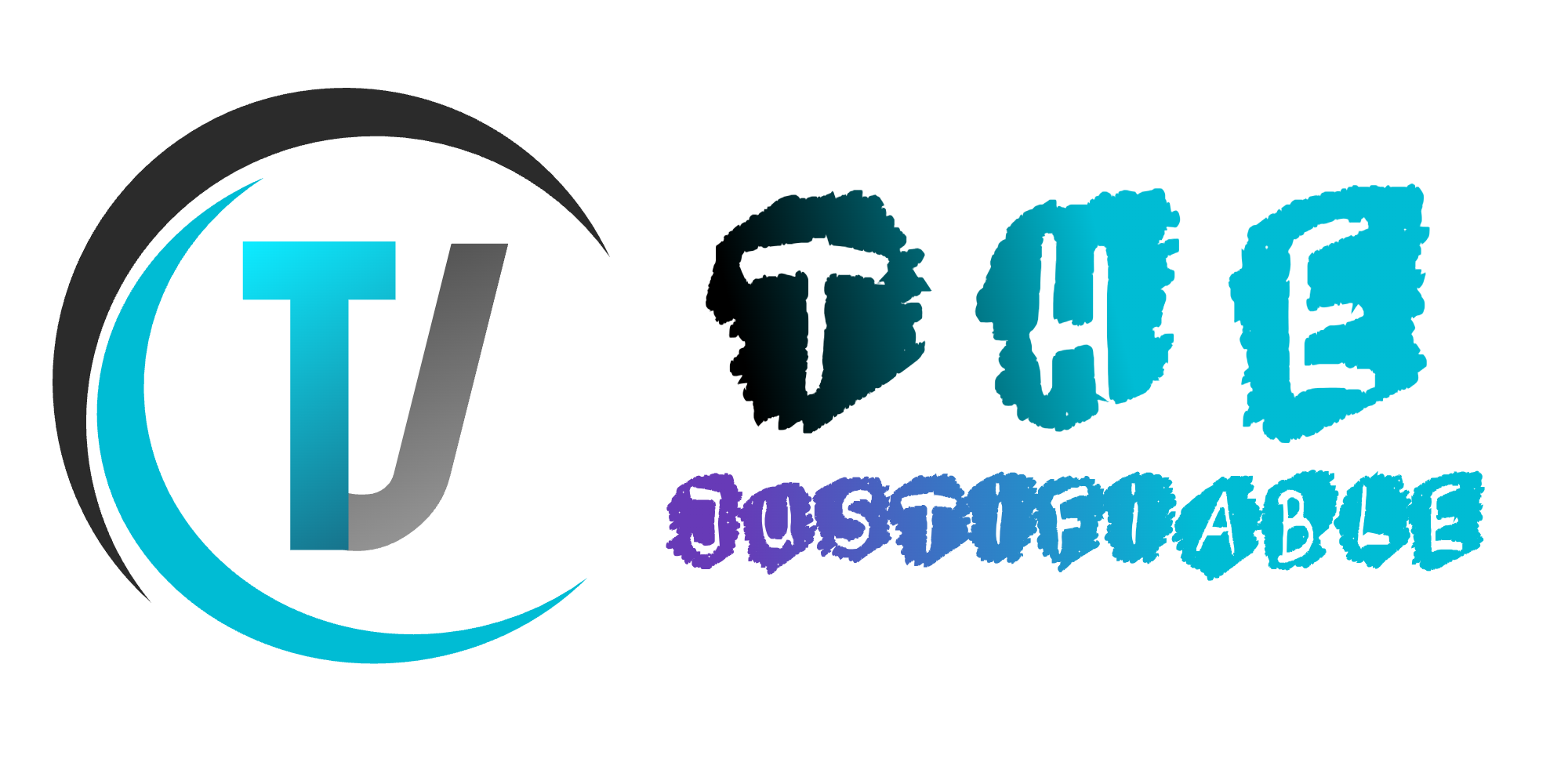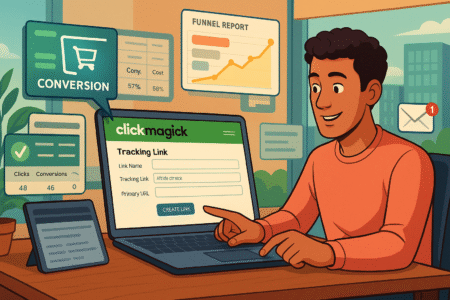Table of Contents
Are you wondering how the Creative Market affiliate program can help you earn $500 or more every month? Curious about what strategies top affiliates are using to drive consistent commissions? You’re in the right place! In this guide, I’ll break down exactly how you can start earning by promoting digital assets like fonts, templates, and graphics from Creative Market.
Whether you’re a blogger, designer, or marketer, this step-by-step strategy will give you the tools to build a steady income. Ready to turn your promotions into profits? Let’s dive in!
Introduction to Creative Market Affiliate Program
The Creative Market affiliate program is a gateway to earning passive income by promoting high-demand digital assets like graphics, fonts, templates, and design tools. Whether you’re a blogger, designer, or marketer, this program offers the potential for consistent earnings by simply recommending creative products to others.
Let’s explore the key aspects of this exciting affiliate program and how you can benefit.
What Is the Creative Market Affiliate Program?
The Creative Market affiliate program allows you to earn commissions for driving sales of digital assets available on their platform. As a Creative Market affiliate, you’ll share links to products like design templates, fonts, and website themes—and when someone purchases through your link, you earn a percentage of that sale.
I believe this program stands out because of its wide range of creative products, making it suitable for almost any audience interested in design or digital content. You don’t need to be a design expert; instead, you’re simply connecting people with the right resources.
Here’s why this program is effective:
- Huge Product Variety: Creative Market offers assets that appeal to graphic designers, web developers, bloggers, and small business owners.
- High Conversion Potential: Design-focused items are often sought-after, making it easier to convert traffic into sales.
- Reliable Commissions: With consistent payouts, affiliates can count on growing monthly income streams.
This program works best when you identify a niche that resonates with your audience and tailor your promotions accordingly.
How Does the Affiliate Program Work?
Here’s how the Creative Market affiliate program functions, broken down into simple steps:
- Sign Up: Apply for the affiliate program through Creative Market’s website. The approval process is typically quick.
- Receive Your Affiliate Link: Once approved, you’ll get access to unique tracking links for any product on the platform.
- Promote Products: Share links on your blog, social media platforms, email newsletters, or YouTube videos.
- Earn Commissions: When users click your link and make a purchase, you earn a commission based on the sale.
The payout structure typically rewards affiliates for both small and large-scale promotions. Whether you’re recommending a $10 font or a premium design bundle, there’s an earning opportunity waiting for you. One of the reasons I suggest starting with smaller, highly specific products is because they often convert better in niche audiences.
What makes this process beginner-friendly is the flexibility. You don’t need a massive following. With effective SEO or targeted campaigns, even a small audience can generate sales.
Key Benefits of Becoming a Creative Market Affiliate
Why choose the Creative Market affiliate program over others? The answer lies in its combination of simplicity, product diversity, and lucrative earning potential. Let me highlight the core advantages:
- Generous Commission Structure: Many affiliates earn between 10% and 30% per sale, depending on the product and campaign performance.
- Evergreen Product Demand: Unlike trends that fade, design resources like fonts and templates always have demand. You can promote them long-term.
- Easy Product Promotion: Whether you prefer writing blogs, creating videos, or sharing on social media, promoting Creative Market products is straightforward.
- Wide Audience Appeal: Digital assets cater to multiple industries, from marketing teams to solopreneurs. This means you’re not restricted to promoting to one niche.
Imagine recommending a high-converting WordPress theme or graphic bundle in a blog post, and within a week, seeing commissions roll in. That’s the power of the program when combined with smart marketing techniques.
For many of us, affiliate programs are a way to create financial freedom. I believe the Creative Market affiliate program offers one of the easiest entry points—especially if you’re already familiar with content marketing. If you’re new to affiliate marketing, don’t worry! There’s plenty of room to experiment and grow.
Pro Tip: Start by promoting products that align with your existing content. If you’re a blogger writing about web design, review popular Creative Market assets like fonts or icons. This strategy maximizes engagement and conversion potential.
Getting Started with Creative Market Affiliate
Getting started with the Creative Market affiliate program is easier than you might think. You don’t need technical skills or a massive following to begin. What you do need is a clear understanding of how to join, get approved, and set up your dashboard to track your success. Let’s break this down and help you hit the ground running.
How to Sign Up for the Affiliate Program
Joining the Creative Market affiliate program is straightforward and only takes a few steps. You’ll start by visiting their website and navigating to the affiliate section, where you can complete the application form. They usually ask for information about your website, social media presence, and how you plan to promote their products.
One of the best things about Creative Market’s program is its accessibility. Unlike some affiliate programs that require large audiences, they welcome creators of all sizes. Even if you’re just starting, you can highlight your plan to use content marketing, SEO, or niche-focused promotions in your application.
I suggest taking a moment to customize your application. Explain how your content relates to their products or how you plan to target a specific niche. For example, if you run a blog about web design, mention how you’ll recommend Creative Market’s themes and templates to your readers. Thoughtful details can help increase your chances of approval.
Once you hit submit, don’t forget to check your inbox regularly. Approval notifications are often sent via email, and you don’t want to miss any important updates.
Understanding the Approval Process
The approval process for the Creative Market affiliate program typically doesn’t take long, but it’s important to get familiar with what they’re looking for. While they don’t disclose every specific requirement, they favor applicants who show a clear promotional strategy and genuine interest in their products.
During this stage, Creative Market may review your website or social channels to ensure they align with their brand. They prioritize affiliates who provide value to their audiences rather than simply promoting products for quick commissions.
If you’re worried about not getting approved, here’s what you can do:
- Optimize Your Website or Blog: Make sure you have relevant content, especially if it relates to digital products like design resources.
- Be Transparent in Your Application: Clearly outline how you intend to promote their products, whether through reviews, tutorials, or social media.
- Show a History of Consistent Content: Even a small but active blog or social media presence can work in your favor.
I know it can be frustrating waiting for approval, but don’t stress too much. In most cases, as long as you’re genuine and have a plan in place, approval is likely. If your application is declined, consider improving your content or audience engagement and applying again.
Setting Up Your Affiliate Dashboard for Success
Once approved, you’ll gain access to your affiliate dashboard. This is where you’ll find your tracking links, performance metrics, and resources to help you grow your affiliate earnings. Think of the dashboard as your command center—it’s where you’ll analyze what’s working and adjust your strategy as needed.
Here’s how to make the most of it:
- Generate and Organize Your Affiliate Links: You’ll be given a unique link for each product you want to promote. I recommend creating categories or folders to keep them organized, especially if you’re promoting multiple products.
- Track Key Metrics: The dashboard will display important data such as clicks, conversions, and earnings. Regularly monitoring these metrics will help you identify which campaigns are performing well.
- Set Goals: Establish realistic goals for clicks and conversions each month. If you’re aiming for $500+ monthly, start by tracking how many sales you need to reach that target.
- Use Creative Market’s Resources: The affiliate program often provides promotional materials, banners, and tips to help you succeed. Take advantage of these tools to enhance your content and boost conversions.
In my experience, staying organized and regularly analyzing performance is essential. It’s easy to let links pile up or ignore certain metrics, but trust me, keeping track will save you time and help you grow your earnings faster.
Pro Tip: Set up weekly or monthly check-ins to review your affiliate performance. This allows you to identify patterns and pivot strategies before any campaign underperforms.
Identifying High-Converting Creative Market Products

To maximize your earnings as a Creative Market affiliate, you need to focus on promoting products that are both in demand and capable of generating consistent sales. The right products can significantly impact your commissions, making it essential to know what to promote and why they convert well.
How to Choose Products That Sell
Choosing the right products is about more than picking what looks appealing. It’s about selecting items that your target audience genuinely needs or frequently searches for. Digital assets like templates, stock photos, or design bundles often convert well because they solve specific problems, whether it’s for web designers, small businesses, or content creators.
When deciding on products, think about your audience’s pain points. Are they struggling to find high-quality fonts for branding? Do they need quick design templates to save time on projects? For example, if your audience includes bloggers, promoting customizable WordPress themes or social media templates could be a goldmine.
I suggest starting with smaller, niche products because they tend to have higher conversion rates than generalized offerings. Look at product descriptions and customer reviews to see what resonates. If buyers are praising certain features, that’s a sign it could work well for affiliate marketing.
You’ll also want to avoid promoting too many products at once. A focused approach—targeting a handful of high-converting items—will allow you to create more meaningful, results-driven content.
Analyzing Market Trends and Demand
Staying ahead of market trends is crucial if you want to keep earning consistently. Creative Market’s catalog evolves frequently, and what’s popular today may change in a few months. Monitoring trends ensures you’re always promoting items that are relevant and in demand.
Tools like Google Trends or Buzzsumo can help identify what’s hot. For example, search for terms like “minimalist web design templates” or “handwritten fonts,” and check the search volume. High search volume often translates to high potential for conversions. Social media platforms like Pinterest can also be goldmines for spotting emerging design trends.
I’ve found that seasonal promotions can boost affiliate sales significantly. Around holidays or major events, businesses often look for themed templates, icons, or digital elements. If you can anticipate their needs, you’ll be positioned to meet them with Creative Market products.
In my experience, keeping an eye on Creative Market’s “Best Sellers” or “Trending” sections is another easy way to identify products with proven demand. These sections showcase items that are already performing well, making them low-risk options for promotion.
Promoting Popular Digital Assets (Fonts, Templates, Graphics)
Creative Market is known for its wide range of digital assets, but not all categories will work for every audience. That’s why I recommend focusing on popular items like fonts, templates, and graphics—these products have broad appeal and tend to convert reliably across multiple niches.
Fonts are one of Creative Market’s highest-converting categories because they’re essential for branding, website design, and content creation. Whether someone is working on a logo or a blog, they’ll need fonts that fit the project’s style. Promoting versatile font bundles can cater to both beginners and experienced designers.
Templates—especially those related to social media, website design, and presentations—are in high demand because they save users time and effort. For example, small business owners often rely on ready-made templates for marketing materials. Highlighting time-saving benefits in your content can help drive conversions.
Graphics and Illustrations are another key category. With the growing popularity of visual content across websites and social platforms, high-quality graphics can attract attention. Consider promoting unique, customizable illustrations or icon packs that creators can use repeatedly.
To succeed here, think beyond just sharing links. I recommend creating content that showcases how these products solve real-world problems. You could write a blog post showing how a particular font pack improves branding, or create a video tutorial demonstrating how templates speed up website development.
Pro Tip: Experiment with promoting digital bundles that offer multiple items at a discount. Bundles appeal to customers looking for value and often lead to higher conversion rates.
Creating Content That Drives Affiliate Sales
High-quality content is the backbone of a successful Creative Market affiliate strategy. Whether you’re writing blogs, creating videos, or sharing on social media, the key is to deliver content that resonates with your audience and naturally promotes products without feeling forced.
Let’s explore the most effective types of content that can maximize your affiliate sales.
Blog Posts and Product Reviews for Organic Traffic
Blog posts are one of the most effective ways to drive long-term affiliate sales. With proper SEO, a well-crafted blog can attract a steady stream of organic traffic, leading to consistent conversions. I suggest creating posts that focus on solving problems, offering tutorials, or sharing honest reviews of Creative Market products.
For example, if you’re writing about design resources, a blog post titled “Top 10 Fonts for Modern Web Design” could generate considerable interest. Within the post, you can include affiliate links to recommended fonts, making it easy for readers to purchase. The key is to provide value first—help them understand why these products are useful before promoting them.
Product reviews work exceptionally well because they offer readers insight into how the product performs and what they can expect. When writing reviews, always be honest and transparent. Readers trust affiliates who genuinely share their experiences. You can discuss product features, benefits, and potential downsides. Include visuals, such as screenshots or product previews, to make the content more engaging.
I believe a blog post strategy works best when combined with keyword optimization. Research search terms like “best design templates” or “top WordPress themes” to target highly relevant traffic. Make sure to naturally include the Creative Market affiliate links within the content to maximize conversions.
Effective Social Media Strategies for Engagement
Social media is a powerful tool for Creative Market affiliates. Platforms like Instagram, Pinterest, and TikTok can help you reach a wider audience and drive clicks to your affiliate links. The secret is to share content that engages users and inspires them to take action.
On Instagram, you could create carousel posts showcasing design tips and link back to Creative Market assets that fit the theme. Pinterest works well for sharing infographics or design inspirations, with pins leading directly to product pages. I suggest experimenting with different post formats—quotes, product showcases, or before-and-after design transformations can work wonders.
Engagement is key here. Interact with your followers through comments, DMs, or polls to understand what type of content resonates. Short, educational posts or quick tips related to digital design often perform better than promotional ones. For instance, a post showing “How to Create a Stunning Website Header” could highlight fonts and templates, with your affiliate links seamlessly included.
Don’t overlook the power of hashtags. They improve content visibility, and targeted hashtags like #webdesign, #digitalassets, or #graphicdesign can help you reach the right audience.
Video Content and Tutorials to Boost Conversions
Videos are becoming increasingly essential for affiliate marketing. Platforms like YouTube and TikTok offer opportunities to create engaging, informative content while subtly integrating Creative Market products. The beauty of video content is its ability to demonstrate products in action, making it more convincing to potential buyers.
Imagine creating a YouTube tutorial titled “How to Design a Logo in 10 Minutes” and showcasing a font bundle from Creative Market. As you walk viewers through the design process, you could link to the fonts in your video description, encouraging viewers to check them out. Tutorials work exceptionally well because they provide value while giving your audience a real-world application of the product.
Short-form videos on TikTok or Instagram Reels are also excellent for showcasing digital assets. You could create quick tips like “3 Fonts That Instantly Improve Any Website” and direct viewers to your affiliate links. These videos don’t have to be long or overly detailed; often, quick, snackable content is enough to spark interest and clicks.
To maximize conversions, include calls to action (CTAs) in your videos. You could say, “If you’re looking to create designs like this, check out the links below.” Viewers are more likely to take action when prompted, especially after seeing the product’s value.
Pro Tip: Repurpose your blog content into videos and vice versa. For example, a blog post reviewing the best templates can easily be turned into a video review, giving you double the exposure and more opportunities for affiliate sales.
Optimizing SEO for Higher Affiliate Commissions

SEO plays a crucial role in increasing your Creative Market affiliate income. The right optimization strategies can help your content rank higher, attract targeted traffic, and ultimately convert visitors into buyers. Let’s explore how to fine-tune your keyword research, on-page SEO, and backlink-building strategies to boost your commissions.
Keyword Research for Targeted Traffic
Effective keyword research is the foundation of successful SEO for affiliates. To drive targeted traffic, focus on keywords that align with Creative Market products and user intent. For example, terms like “best Canva templates for social media” or “handwritten fonts for branding” are highly specific, making them more likely to attract people who are ready to buy.
You can use keyword research tools like SEMrush, or Google Keyword Planner to uncover valuable search terms. Start by identifying long-tail keywords with moderate competition but high purchase intent. These keywords are often phrases that people search for when they’re further along the buyer’s journey, such as “download minimal website templates” or “buy script fonts online.”
I recommend grouping your keywords based on content goals. For blog posts, focus on informational keywords like “how to use graphic design templates”, while for product reviews or landing pages, target commercial terms like “best fonts for marketing materials.” Balancing both types will help you reach a wider audience while ensuring conversions.
On-Page SEO Techniques for Affiliate Content
On-page SEO ensures that your content is optimized for search engines and users alike. Start by incorporating the primary keyword naturally within your title, meta description, headings, and throughout the body of the content without overloading it. Rank Math and Yoast SEO plugins can help you check if you’ve used the keyword correctly without crossing into keyword stuffing.
Optimize headings (H1, H2, H3) to guide readers and search engines through your content. For example, if you’re writing about “top graphic design bundles,” break the content into clear sections, each addressing a unique aspect of the product.
Here’s what I suggest including as part of your on-page SEO strategy:
- Internal Linking: Link to related blog posts or pages within your website to improve navigation and keep users engaged longer.
- High-Quality Images: Visuals help enhance the reader experience and make your content more shareable, especially when you’re promoting Creative Market’s digital products.
- Optimized Meta Descriptions: Make sure your meta description is compelling and includes the primary keyword. This will encourage users to click through when your content appears in search results.
- Alt Text for Images: Every image should have keyword-optimized alt text to help search engines understand the visual content.
In my experience, a well-optimized article doesn’t just rank—it also converts. Structure your content to answer questions, solve problems, and naturally highlight how Creative Market products fit into the reader’s needs.
Building Backlinks to Drive Organic Visibility
Backlinks are critical for boosting your SEO authority and driving organic traffic to your Creative Market affiliate content. A strong backlink profile signals to search engines that your content is valuable, helping it rank higher in search results. But not all backlinks are created equal. Focus on earning high-quality links from authoritative sites within your niche.
One effective strategy is guest blogging. Reach out to blogs or websites related to design, marketing, or digital products and offer to contribute a post. Within the article, you can link back to your own content. This not only drives traffic but also establishes you as a credible affiliate marketer.
You can also earn backlinks through partnerships or collaborations with influencers and bloggers. When they link to your product reviews or resource guides, it boosts your content’s authority. For example, a collaboration with a design-focused YouTuber who links to your blog in their video description could create a surge in referral traffic.
Additionally, consider creating shareable content like infographics, tutorials, or case studies. These types of resources are often linked to naturally, as other websites find them valuable for their audiences.
Remember, building backlinks takes time, but each high-quality link you gain adds lasting value to your SEO efforts. With consistent backlink building, your Creative Market affiliate content can maintain strong visibility and continuously attract new users.
Pro Tip: Don’t just wait for backlinks to come organically. Actively promote your content through email outreach or on social media to encourage shares and mentions that can lead to valuable links.
Leveraging Email Marketing for Affiliate Sales
Email marketing is one of the most effective ways to generate consistent affiliate sales, especially with the Creative Market affiliate program. With direct access to engaged users, you can deliver personalized recommendations and product updates that drive conversions.
Let’s explore how to build a strong email list, craft persuasive emails, and automate follow-ups to boost your earnings.
Building an Email List of Engaged Users
Your success in email marketing starts with building a list of subscribers who are genuinely interested in your content and recommendations. A large list won’t help if the subscribers don’t engage or take action. I suggest focusing on quality over quantity, targeting users who find value in the design resources you promote.
To build an engaged list, you’ll want to use lead magnets. These could be free design guides, font pairing tips, or template packs that relate to Creative Market products. Offering something valuable encourages users to subscribe. For example, a free resource like “10 Free Social Media Templates to Kickstart Your Branding” could attract small business owners and marketers—both ideal audiences for Creative Market assets.
Place sign-up forms strategically on your website, particularly within blog posts related to design or creative content. Pop-ups or embedded forms on landing pages can also boost your subscriptions. Just make sure they’re non-intrusive and offer immediate value. Social media platforms are another great way to direct users to your email list, especially when you tease exclusive content or discounts available only to subscribers.
Once you have subscribers, segment your list based on their interests. For example, one segment could be for users interested in web design templates, while another could focus on graphic resources. This segmentation ensures you send targeted emails that drive more affiliate sales.
Writing Persuasive Emails That Convert
The key to converting subscribers into buyers is crafting emails that feel personal, helpful, and relevant. Your emails should build trust with your audience while showcasing the value of Creative Market products in solving their problems. Rather than pushing sales, position your recommendations as solutions.
I suggest starting your email with a compelling subject line that grabs attention. For example, instead of “Check Out These Templates,” you could say “Struggling to Design Fast? Try These Time-Saving Templates.” Once they open the email, hook them with a relatable statement that addresses a pain point or need.
The body of the email should be clear and concise, focusing on how the product can benefit the reader. If you’re promoting a graphic design bundle, describe how it can save time or elevate their projects. Include visuals or screenshots to showcase what they’ll get. Readers love seeing examples, especially for creative products.
End the email with a clear call to action. Avoid generic phrases like “Click Here.” Instead, use action-oriented language such as “Download These Templates Now” or “Get Instant Access to Stunning Fonts.” The more specific and enticing your CTA, the higher your chances of conversion.
Automating Follow-Ups for Maximum Sales
Manually following up with subscribers can be time-consuming, but automation allows you to stay connected and consistently promote Creative Market products without overwhelming your schedule. Automated email sequences ensure that new subscribers receive a series of emails designed to nurture their interest and lead them to make a purchase.
I recommend setting up a welcome series for new subscribers. The first email could introduce your brand, while the second could showcase popular Creative Market products or free resources. By the third or fourth email, you can introduce affiliate recommendations more directly.
Automation also works wonders for abandoned cart reminders or promotional campaigns. For instance, if you’re offering an exclusive discount on a popular template bundle, you can create a series of follow-up emails reminding users to take advantage before the offer expires.
Another way to boost affiliate sales through automation is to send regular updates about Creative Market’s new or trending products. This keeps your audience engaged and informs them about new opportunities to enhance their design work. You can easily schedule these updates monthly or quarterly using email marketing platforms like ConvertKit.
One thing I’ve learned is that personalization within automated emails makes a huge difference. Even a simple change like addressing the subscriber by their name can increase open rates and engagement.
Pro Tip: Track your email campaigns and monitor key metrics such as open rates, click-through rates, and conversions. This data helps you refine your approach, ensuring you send more effective emails that drive consistent affiliate sales.
Effective Social Media Marketing for Affiliates
Social media can be a game-changer when promoting Creative Market products. With the right strategy, you can drive substantial traffic to your affiliate links, boost brand awareness, and convert followers into buyers. Let’s explore which platforms work best and how to maximize engagement and conversions.
Choosing the Right Platforms to Promote Creative Market Products
Not all social media platforms are equally effective for promoting Creative Market products. The key is to identify where your target audience spends most of their time and how they interact with design-related content. Each platform offers unique advantages, so choosing wisely can make a huge difference in your affiliate success.
For visual products like design templates, graphics, and fonts, platforms such as Instagram, Pinterest, and Facebook are ideal. Instagram and Pinterest thrive on visual content, while Facebook allows for diverse promotion through groups and pages. If your audience is primarily composed of designers, marketers, or small business owners, focusing on these platforms will increase your chances of success.
I recommend testing multiple platforms initially and tracking performance metrics, such as engagement rates and link clicks. This will help you identify which ones deliver the highest ROI for promoting Creative Market products. Once you’ve identified a top-performing platform, double down on your efforts while experimenting with new strategies.
Remember, consistency matters. You’re more likely to gain traction when you post regularly and maintain an active presence.
Leveraging Instagram, Pinterest, and Facebook for Traffic
Instagram, Pinterest, and Facebook are powerhouses for driving traffic, but they require unique strategies to maximize their potential. Let’s break down how to use each effectively.
Instagram is all about aesthetics and storytelling, making it ideal for showcasing Creative Market’s visually appealing products. I suggest creating carousel posts or stories demonstrating how a product can transform a design project. For example, you could show a before-and-after comparison of a website header designed using a Creative Market template. Include a strong call to action, such as “Swipe up to download the template” or “Link in bio for details.”
On Pinterest, you can drive long-term traffic with visually compelling pins. Create graphics highlighting product features or benefits, and link each pin directly to your affiliate URL or blog post. Since pins are searchable for months, if not years, Pinterest provides sustainable traffic. Make sure to optimize pins with relevant keywords like “best fonts for branding” or “graphic design templates.”
Facebook works well for sharing blog posts, video reviews, or product recommendations. Join design-related groups and engage with members by answering questions or sharing resources that include Creative Market products. Just be mindful of the group’s rules to avoid being seen as overly promotional. Building genuine connections within these communities can generate consistent traffic.
Cross-promote your content across these platforms, but adapt the message to fit the audience on each one. What works on Pinterest may not resonate on Instagram, so tailor your content accordingly.
Running Paid Social Media Ads to Boost Sales
Paid social media ads can significantly accelerate your affiliate earnings if done correctly. While organic reach is valuable, ads allow you to target specific audiences and drive immediate traffic to your Creative Market affiliate links. Platforms like Facebook and Instagram offer advanced targeting options, allowing you to reach users based on their interests, behaviors, and demographics.
When creating ads, focus on highlighting products that solve a problem or deliver a clear benefit. For example, an ad promoting a “bundle of social media templates” should emphasize how the templates save time and improve brand aesthetics. Use captivating visuals and persuasive ad copy to grab attention within the first few seconds.
I suggest starting with a small budget and running A/B tests to see which ads perform best. Test different product images, headlines, and CTAs to optimize results. Keep in mind that retargeting ads—those aimed at users who have already visited your content but didn’t convert—are highly effective. They remind potential buyers of the product and nudge them to make a purchase.
Track the performance of your ads using metrics like click-through rates (CTR), conversion rates, and cost per acquisition (CPA). This data will help you refine your campaigns and ensure you’re getting the most out of your budget.
Pro Tip: Combine organic and paid strategies for maximum impact. For example, run ads promoting high-performing organic posts or use retargeting ads to follow up on users who engaged with your organic content but didn’t convert right away.
Analyzing and Improving Your Affiliate Performance

To consistently earn through the Creative Market affiliate program, you need to track and optimize your performance. Analyzing clicks, conversions, and revenue helps you understand what’s working and what isn’t. Let’s explore the key metrics, tools, and optimization techniques you can use to grow your affiliate earnings.
Tracking Your Clicks, Conversions, and Revenue
Tracking performance metrics is essential for improving your Creative Market affiliate strategy. Without clear data, you won’t know which campaigns drive the most conversions or how to scale your efforts effectively. I recommend regularly monitoring three key metrics: clicks, conversions, and revenue.
Clicks give you an idea of how many people are engaging with your affiliate links. If you see a high click count but low conversions, that could signal an issue with the product landing page, content relevance, or audience targeting. On the other hand, low clicks could mean your promotional efforts aren’t reaching the right audience.
Conversions are the most critical metric, as they directly impact your earnings. A conversion occurs when someone clicks your affiliate link and completes a purchase. To boost conversions, you’ll need to focus on the quality of your content, product selection, and user experience.
Revenue ties everything together. Analyze which products generate the most commissions and whether they align with your promotional strategies. You might notice that certain product categories, like font bundles or website templates, consistently bring in higher earnings. Tracking revenue trends over time helps you prioritize top-performing products.
Use affiliate dashboard reports, along with tools like Google Analytics, to track these metrics and identify patterns. This will help you make informed decisions about where to invest your time and effort.
Using Analytics Tools to Identify Areas for Improvement
Analytics tools are your best friend when it comes to understanding performance and pinpointing areas for improvement. If you’re not already using them, you’re missing out on valuable insights that could boost your Creative Market affiliate income.
Google Analytics is one of the most popular tools for tracking traffic, user behavior, and referral sources. For example, you can see which blog posts or landing pages drive the most clicks to your affiliate links. If a particular post consistently ranks high in search results and brings in traffic, consider updating it regularly to maintain its effectiveness.
I also suggest checking your bounce rates. If users are leaving your page quickly without clicking the affiliate links, it could be due to poor content structure or a lack of compelling CTAs. Experiment with adding product recommendations earlier in the content or making them more visually appealing.
Creative Market’s affiliate dashboard offers valuable reports showing click-through rates, conversions, and earnings. Cross-reference these reports with your Google Analytics data to identify discrepancies or opportunities for growth. For example, if a specific product link generates high clicks but no conversions, consider promoting an alternative product.
Pro tip: Look for seasonal trends in your data. Products like holiday-themed templates or event-related assets may perform better during certain times of the year, allowing you to plan targeted campaigns.
A/B Testing Different Campaigns for Better Results
A/B testing is a powerful way to refine your affiliate strategy and maximize conversions. It involves testing two versions of a campaign or piece of content to see which one performs better. Even small changes, such as tweaking your call to action or changing an image, can lead to significant improvements.
I recommend starting with simple tests. For example, if you’re promoting a blog post about graphic design resources, you could test two different headlines—one emphasizing speed (“Create Designs in Minutes with These Templates”) and another highlighting quality (“High-Quality Templates for Stunning Designs”). Track which version drives more clicks and conversions, then use the winner as a model for future campaigns.
You can also A/B test:
- Email subject lines: See which wording results in higher open rates.
- Social media captions: Test different angles to see which garners the most engagement and clicks.
- Affiliate link placement: Try placing links earlier in the content to see if they convert better than those placed at the end.
I’ve found that testing works best when you focus on one variable at a time. This allows you to accurately measure the effect of each change. Keep in mind that not all tests will yield positive results immediately, but continuous testing and optimization will pay off in the long run.
Track your test results and document what works so you can replicate successful strategies across multiple campaigns. The goal is to build a scalable process that consistently improves performance.
Pro Tip: Always monitor both short-term and long-term results. Some campaigns may perform well initially but fade over time, while others could gain traction with consistent optimization.
Scaling to $500+ Monthly and Beyond
Once you’ve established consistent earnings from the Creative Market affiliate program, scaling your income involves strategic growth. By expanding your content creation, leveraging collaborations, and reinvesting earnings, you can build a sustainable affiliate business that generates $500 or more monthly.
Expanding Your Content Creation Efforts
To scale your affiliate income, you’ll need to continuously produce high-quality content that attracts traffic and conversions. Expanding your content creation doesn’t mean producing more content for the sake of volume—it’s about targeting specific niches, solving problems, and optimizing your existing content for better performance.
Start by identifying which types of content drive the most conversions. If product reviews or tutorials consistently outperform listicles or general blog posts, prioritize creating similar content. You could create in-depth guides on specific topics like “How to Use Minimalist Templates for Branding” or “Top Digital Assets for Web Developers.” These long-form guides have a higher chance of ranking on search engines and attracting organic traffic.
I suggest repurposing your top-performing content into other formats. For example, if a blog post is driving significant clicks to your Creative Market affiliate links, consider turning it into a YouTube video or Instagram carousel. Repurposing extends the content’s reach while catering to different audience preferences.
Another strategy is to update old content with new affiliate links and optimized keywords. Google rewards fresh content, so revisiting old posts can breathe new life into them and boost rankings.
Building Partnerships and Collaborations
Collaborations with other bloggers, influencers, and content creators can exponentially grow your affiliate reach. When you partner with someone who shares your target audience, you gain access to their followers, which can drive more clicks and conversions for your Creative Market products.
Look for partners who create complementary content. For instance, if you run a blog about web design, collaborating with a YouTuber who reviews design tools could help you reach new audiences. I recommend approaching potential partners with a clear collaboration plan, such as co-creating a piece of content or cross-promoting each other’s work.
Guest posting on established websites is another effective way to gain exposure. By writing a guest post related to digital design or marketing, you can link back to your own affiliate content, driving targeted traffic. Similarly, participating in joint webinars or Instagram Lives can give your promotions an interactive boost, leading to real-time conversions.
I’ve seen collaborations work particularly well when partners provide unique perspectives. For example, a design influencer could showcase how they use Creative Market templates in their daily workflow, driving their followers to explore your affiliate recommendations.
Reinvesting Earnings to Scale Further
Reinvesting a portion of your affiliate earnings is a powerful way to fuel long-term growth. Instead of treating your earnings as passive income, think of them as a resource to expand your promotional efforts and improve content quality.
One way to reinvest is through paid advertising on platforms like Facebook, Instagram, or Pinterest. Use a small portion of your earnings to run targeted ads promoting high-converting blog posts, video tutorials, or product pages. With proper targeting, these ads can attract new visitors who are likely to convert into buyers.
I also recommend investing in SEO tools and keyword research platforms. Tools like Ahrefs or Sitechecker can help you uncover high-traffic, low-competition keywords related to Creative Market products, allowing you to create content that ranks well and drives consistent traffic.
If content production is limiting your growth, consider outsourcing tasks like graphic design, video editing, or content writing. Hiring freelancers can help you maintain consistent content output while freeing up your time to focus on strategy and optimization.
Lastly, reinvest in upgrading your website’s design, speed, and user experience. A smooth, visually appealing site can keep visitors engaged and lead to higher conversion rates.
Pro Tip: Set aside 20-30% of your monthly earnings to reinvest in growth. Whether through paid ads, outsourcing, or tool subscriptions, reinvesting ensures that your affiliate income scales steadily over time.
Common Mistakes to Avoid as a Creative Market Affiliate
Even with a solid Creative Market affiliate strategy, certain mistakes can limit your earnings or prevent growth. Let’s highlight the most common errors affiliates make and how you can avoid them to optimize your performance and generate consistent income.
Ignoring SEO Best Practices
SEO is one of the most important drivers of organic traffic, and ignoring best practices can severely hinder your ability to reach new audiences. Many affiliates make the mistake of relying on poorly optimized content, which doesn’t rank well on search engines and attracts minimal traffic. Without proper SEO, even the best-written content may never be seen.
Effective SEO starts with keyword research. Target keywords that match the intent of potential buyers, such as “best website design templates” or “modern fonts for branding.” Neglecting this step often results in content that misses its target audience or ranks for irrelevant search terms. I suggest using tools like Ahrefs or SEMrush to identify keywords that have high search intent and moderate competition.
Beyond keyword optimization, pay attention to technical SEO elements like page speed, mobile-friendliness, and metadata. Pages that load slowly or aren’t optimized for mobile users often have higher bounce rates, reducing conversion opportunities. Ensure your website is fast, responsive, and free from errors to maximize traffic retention.
Internal linking is another critical SEO practice. Many affiliates forget to link to related blog posts or landing pages, missing out on opportunities to increase engagement. Linking internally helps distribute link equity across your content and keeps readers exploring your site longer.
Pro tip: Update old content regularly to keep it relevant and improve its rankings. Google rewards fresh content, and updating your articles with new affiliate links or keywords can give them a traffic boost.
Overpromoting Products Without Value
Promoting too many products or recommending them without genuine value can damage your credibility. Audiences can easily spot when affiliates push products purely for commissions, and this approach often leads to lower trust, fewer clicks, and minimal conversions.
Instead of overwhelming readers with multiple product links, focus on promoting fewer products that genuinely fit their needs. Take the time to understand the strengths and weaknesses of each Creative Market product you’re recommending. Write detailed reviews or tutorials that highlight how specific products solve problems. For example, if you’re recommending a design template bundle, explain how it can save hours of work or help users create polished projects.
I believe one of the most effective strategies is to use the products yourself. If you’ve tried a template or font, share your experience in your content. Readers trust personal stories more than generic recommendations. Discuss what you liked about the product, any challenges you faced, and who it’s best suited for. Transparency builds trust and encourages more conversions.
Be selective about the products you promote, and make sure they align with your audience’s needs. Promoting irrelevant products can reduce engagement and hurt your affiliate earnings.
Failing to Track and Adjust Campaigns
One of the biggest mistakes affiliates make is setting up campaigns and forgetting to monitor their performance. Without tracking clicks, conversions, and revenue, you won’t know which strategies work and which need improvement. Affiliates who fail to analyze data often miss opportunities to optimize their campaigns and scale their earnings.
I suggest regularly checking your Creative Market affiliate dashboard to review key metrics. Look at which blog posts, videos, or social media campaigns drive the most clicks and conversions. If certain products perform well, consider doubling down on promoting them through new content or ads.
Use tools like RedTrack to gain deeper insights into user behavior. Identify where your traffic comes from, how long visitors stay on your page, and which CTAs result in the most clicks. If you notice a high bounce rate on a particular page, investigate why users are leaving and make improvements, such as adding more engaging content or stronger CTAs.
A/B testing is another valuable technique. Test different headlines, affiliate link placements, or promotional messages to see which versions perform better. For example, you can test whether including product links earlier in a blog post leads to more conversions than placing them at the end.
Campaigns that aren’t performing well shouldn’t be abandoned immediately. Instead, analyze the data, identify bottlenecks, and experiment with improvements. Continuous optimization ensures that your affiliate strategy evolves and adapts to changing trends.
Pro Tip: Set monthly performance reviews to analyze what’s working and what’s not. This habit helps you stay proactive and allows for quick adjustments, preventing stagnation in your earnings.
Tools and Resources to Maximize Affiliate Success

To achieve long-term success as a Creative Market affiliate, leveraging the right tools and resources is crucial. These tools help streamline your workflow, optimize your content, and maximize revenue potential through data-driven decisions and efficient content creation.
Best Tools for Keyword Research and SEO
Effective SEO begins with identifying the right keywords to target. Without keyword research, your content may fail to reach the intended audience. Using tools like Ahrefs, SEMrush, and Google Keyword Planner can help you find high-traffic, low-competition keywords related to Creative Market products.
Ahrefs and SEMrush provide insights into keyword difficulty, search volume, and competitor performance. I recommend starting with long-tail keywords, such as “modern logo design templates” or “handwritten fonts for branding.” These are easier to rank for and often target users with higher purchase intent.
Don’t forget about on-page SEO tools like Yoast SEO or Rank Math, which ensure your content is fully optimized before publishing. These tools analyze keyword density, readability, and internal links, guiding you to make improvements that can boost your rankings. I’ve found that simple tweaks, like improving meta descriptions or header tags, can significantly impact organic traffic.
To stay ahead, schedule monthly reviews of keyword performance and update older posts with optimized keywords to maintain rankings.
Analytics Tools to Track Affiliate Performance
Tracking affiliate performance helps you identify which campaigns are successful and where you can improve. Tools like Google Analytics, MonsterInsights, and Creative Market’s affiliate dashboard provide valuable metrics on clicks, conversions, bounce rates, and traffic sources.
Google Analytics can reveal how users interact with your content. For example, you might discover that readers are leaving a page without clicking your affiliate link. This data allows you to tweak content or add more engaging CTAs. MonsterInsights integrates with WordPress, offering an easy way to track data directly from your website’s dashboard.
The affiliate dashboard is equally important because it tracks earnings and affiliate-specific performance. I recommend analyzing conversion rates to see which products convert better. If you find that templates perform well while fonts don’t, shift your focus to promoting more templates.
By using analytics regularly, you’ll uncover patterns that can guide your content strategy and marketing efforts.
Content Creation and Social Media Tools
Creating high-quality, shareable content is at the heart of a successful Creative Market affiliate strategy. Canva and Adobe Spark are great tools for creating eye-catching visuals, which are essential for blog posts, social media, and email campaigns. If you’re promoting Creative Market’s design assets, compelling visuals can enhance engagement.
Grammarly ensures your content is polished and free of errors, while Hemingway Editor helps improve readability. A well-structured post with clean, concise language is more likely to hold a reader’s attention and drive conversions.
For social media, tools like Buffer or Hootsuite let you schedule posts and manage multiple platforms efficiently. This consistency keeps your content visible to followers without overwhelming you with daily manual posting. Visual platforms like Pinterest benefit from scheduling pins ahead of time, ensuring consistent traffic back to your content.
Pro tip: Combine social media automation with A/B testing. Test different types of content to see what resonates most with your audience and drives clicks to your affiliate links.
Final Tips for Success with Creative Market Affiliate
Success with the Creative Market affiliate program is a result of consistent effort, relationship-building, and staying informed about trends. Let’s explore some key tips to ensure long-term growth and higher earnings.
Staying Consistent with Content and Promotion
Consistency is what separates successful affiliates from those who struggle. Many affiliates create a few pieces of content and expect immediate results, but building authority and trust takes time. Regularly producing high-quality content—whether through blogs, videos, or social media—is essential to maintaining and growing your audience.
I recommend creating a content calendar to ensure you’re publishing consistently. Set aside time to research new content ideas and review product updates on Creative Market. Content centered around product reviews, tutorials, or trend guides often performs well.
Consistency also applies to your promotional efforts. Share your content across multiple channels, including email, social media, and forums. The more touchpoints you create, the greater your chances of reaching new audiences and driving affiliate clicks.
Networking with Other Affiliates for Growth
Affiliate marketing doesn’t have to be a solo endeavor. Networking with other affiliates allows you to share strategies, learn new techniques, and collaborate on projects. Join affiliate marketing forums, attend industry events, or participate in online groups where you can interact with like-minded marketers.
Consider reaching out to affiliates who promote similar products or operate in complementary niches. For example, a blogger focused on branding may collaborate with a designer who promotes website themes. Cross-promotions, guest posts, or joint webinars can help both parties expand their reach.
Learning from others’ successes and mistakes can also help you avoid common pitfalls and discover new growth opportunities. I’ve personally seen affiliates benefit from co-creating content like comparison posts or joint reviews, which boost visibility and bring in diversified traffic.
Staying Updated on Creative Market Trends
Staying informed about emerging design trends and new product releases on Creative Market is critical to remaining competitive. Popular products change over time, so you need to stay ahead of the curve to maintain relevance and capitalize on new opportunities.
Subscribe to Creative Market’s newsletters, follow their social media channels, and regularly check their “Trending” or “Best Sellers” sections. These updates often highlight products gaining traction, giving you an edge when promoting them. For example, if seasonal templates or minimalist design elements are trending, you can create timely blog posts or social media campaigns around them.
Another way to stay informed is to follow design industry influencers and blogs. They often provide insights into future trends, allowing you to create proactive content before demand peaks.
Pro tip: Monitor competitors to see what they’re promoting and how their audiences are responding. This can spark new ideas for your content strategy and affiliate campaigns.







